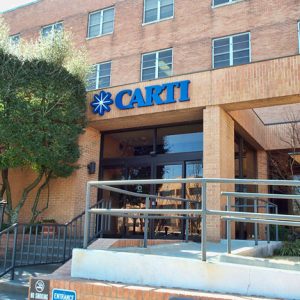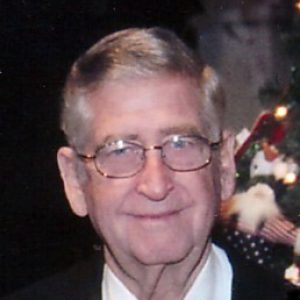calsfoundation@cals.org
CARTI
aka: Central Arkansas Radiation Therapy Institute
CARTI is a not-for-profit organization that treats cancer patients, even if they cannot pay. As of 2013, CARTI has treated more than 220,000 patients. CARTI is headquartered in Little Rock (Pulaski County) and has locations in the city at St. Vincent Health and Baptist Health Medical Center, as well as radiation therapy centers in North Little Rock (Pulaski County), Conway (Faulkner County), Searcy (White County), Mountain Home (Baxter County), and Pine Bluff (Jefferson County). It has hematology and oncology locations in Little Rock, North Little Rock, Heber Springs (Cleburne County), Benton (Saline County), Morrilton (Conway County), El Dorado (Union County), Clinton (Van Buren County), and Monticello (Drew County).
During the 1960s, radiation therapy in Arkansas consisted of individual cobalt units treating cancer patients at hospitals. The majority of patients sought treatment out of state, if they could afford it. With technology evolving rapidly, it became cost-prohibitive for hospitals to provide state-of-the-art radiation therapy.
In 1968, four Arkansas medical institutions—St. Vincent Infirmary, the University of Arkansas for Medical Sciences (UAMS), Baptist Medical Center, and the Veterans’ Administration Hospital—combined resources and efforts to establish a centralized provider of radiation therapy. The CARTI board of directors formed in June 1970. Three years later, the Rockwin Fund gave $25,000 to hire Edward Rensch Jr. as CARTI’s executive director.
After County Judge Frank Mackey and other city officials approved the project in July 1973, tax-exempt bonds were issued to build the facility at St. Vincent Infirmary’s School of Nursing Building. The CARTI board and Stephens Inc., signed an agreement to issue $3.25 million for the project. Architect James C. Wellborn worked with M. D. Anderson in Houston, Texas, on the plans for CARTI, which required special treatment vaults with concrete walls and a roof up to six inches thick to house radiation therapy equipment.
Known then as Central Arkansas Radiation Therapy, CARTI began treating patients on April 5, 1976. The staff included board-certified radiation oncologists, certified radiation therapists, dosimetrists, medical physicists, nurses, patient liaisons, transportation assistants, and other support staff.
Rensch served as executive director until 1983. He then became CARTI president and chief executive officer (CEO), retiring in 1994. Janice E. Buford, CARTI chief operating officer from 1990 to 1994, took over from Rensch as CEO.
In 1985, CARTI became the first freestanding radiation therapy center in the nation to be accredited by the Joint Commission, formerly the Joint Commission on Accreditation of Healthcare Organizations (JCAHO). In 1997, CARTI was the first non-profit to receive the Governor’s Quality Award. In 2009, six of CARTI’s facilities earned accreditation from the American College of Radiology.
The organization became known as simply CARTI in 2011 to eliminate the reference to radiation in its name, as it had expanded its treatments beyond just radiation.
In 2011, both Little Rock Hematology and Oncology and Radiation Oncology Associates P.A. merged into CARTI to form a multispecialty cancer organization; in 2013, Hematology Oncology Services of Arkansas also joined CARTI. In 2015, CARTI opened a $90 million, 170,000-square-foot center in western Little Rock.
CARTI provides support services and resources for patients and their families. The CARTI Foundation was established in 1983 to support CARTI’s mission and raise funds to provide for the organization’s future.
For additional information:
CARTI. http://www.carti.com (accessed March 8, 2022).
Melson, Alison. “The Edge in Battling Cancer.” Image: The Weekly Source for Radiology Professionals, January 26, 2009, pp. 12–15.
Phyllis Hemann
North Little Rock, Arkansas
 Divergent Prosperity and the Arc of Reform, 1968–2022
Divergent Prosperity and the Arc of Reform, 1968–2022 Health and Medicine
Health and Medicine Central Arkansas Radiation Therapy Institute (CARTI)
Central Arkansas Radiation Therapy Institute (CARTI)  Edward Rensch
Edward Rensch 



Comments
No comments on this entry yet.